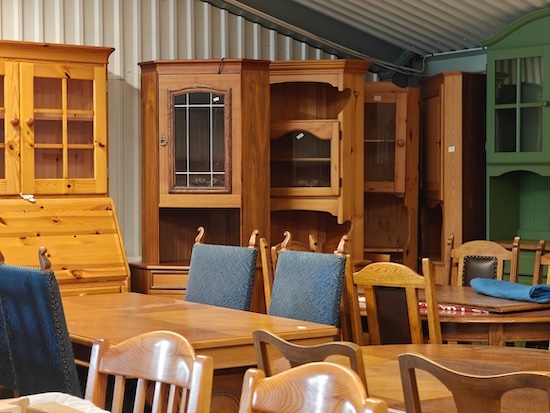- Home
- Learn About Antique Furniture and Reproductions
- Resources
- Antique and Reproduction Furniture
- How to Identify a Quality Antique Reproduction Furniture Piece
How to Identify a Quality Antique Reproduction Furniture Piece
 The world of antique reproductions can be both inspiring and daunting. While a well-crafted reproduction preserves the artistry of centuries past, poorly executed imitations—what we might call “fakes”—can lack integrity, durability, and authenticity. For those who value craftsmanship and historical accuracy, distinguishing between the two is essential. We have devoted more than twenty-five years to building reproductions of heirloom quality, and in doing so, we have developed a discerning eye for the hallmarks of true craftsmanship.
The world of antique reproductions can be both inspiring and daunting. While a well-crafted reproduction preserves the artistry of centuries past, poorly executed imitations—what we might call “fakes”—can lack integrity, durability, and authenticity. For those who value craftsmanship and historical accuracy, distinguishing between the two is essential. We have devoted more than twenty-five years to building reproductions of heirloom quality, and in doing so, we have developed a discerning eye for the hallmarks of true craftsmanship.
The Importance of Solid Wood
The first and most revealing indicator of quality is the material. Authentic reproductions are made from solid hardwoods such as mahogany, walnut, oak, or cherry. These woods were historically used by master cabinetmakers and remain unrivaled for their strength, stability, and capacity to showcase intricate carvings. By contrast, inferior imitations often rely on particle board or MDF clad in thin veneers. While these manufactured substrates may mimic the appearance of solid wood initially, they lack substance and longevity. They are prone to warping, splitting, or delaminating over time. In short, solid wood not only ensures durability but also embodies the tactile weight, depth, and richness of grain that define true furniture.
Examining Joinery
A second hallmark of authenticity lies in the joinery. Historically, fine furniture was assembled using methods such as mortise-and-tenon, dovetail, and tongue-and-groove joinery. These techniques rely on interlocking wood fibers rather than nails or industrial adhesives, producing joints that endure for generations. In a quality reproduction, you will find hand-cut dovetails on drawer corners, mortise-and-tenon joints in chairs and tables, and meticulously aligned seams. In a “fake,” however, shortcuts are common—staples, glue, or screws concealed beneath veneers signal mass production rather than craftsmanship.
Attention to Proportion and Detail
Authentic reproductions honor the proportions, motifs, and details of the original period pieces. The graceful cabriole legs of a Queen Anne chair, the pierced fretwork of Chippendale, or the acanthus leaves carved in Victorian designs require both artistry and technical skill. Each curve, molding, and embellishment should be crisp, symmetrical, and consistent with historical precedent. Poor imitations often betray themselves through awkward proportions, simplified motifs, or machine-cut ornamentation lacking depth. The eye quickly discerns the difference between hand-carved details and shallow, repetitive carvings.
The Role of Finish
A reproduction’s finish is not merely cosmetic; it is integral to its authenticity. Hand-applied stains, shellac, French polish, or carefully rubbed waxes bring out the depth of solid wood grain and allow a piece to age gracefully. By contrast, imitations often rely on sprayed lacquers or plasticized finishes, which may appear glossy but obscure the wood’s natural character. Over time, these finishes tend to chip or peel rather than develop the warm patina that defines heirloom furniture.
Transparency from the Maker
Finally, a mark of quality is the willingness of the craftsman or dealer to discuss materials and methods. A reputable maker will explain the type of wood, joinery, and finish used, and will often welcome questions about the inspiration behind a design. If a company cannot provide clear answers—or worse, avoids the question entirely—this is a strong indication that their furniture may not meet the standards of true reproduction.
The Laurel Crown Standard
We regard reproduction as a serious art form. Each of our pieces is built from solid mahogany, employing traditional joinery techniques and finished by hand to achieve the depth and warmth that only time-honored craftsmanship can produce. By upholding these principles, we make sure that our reproductions embody not only the look but also the substance of the antiques that inspire them.
Authenticity Preserved Through Craftsmanship
Identifying a quality antique reproduction requires a discerning eye and a respect for history. By examining the wood, the joinery, the proportion, and the finish—alongside the maker’s transparency—you can distinguish between a faithful heirloom and a superficial imitation. When executed with integrity, a reproduction becomes more than furniture; it is a continuation of tradition, designed to endure for generations.









